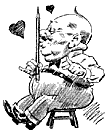Some channels of visual communication correlated with:
- purposes;
- typical contexts;
- typical stylistic considerations; and,
- the main factors in consideration of approach.
Channel
Purposes
Contexts
Stylistic considerations
Main approaches
Diagram
- explains object, system, process or relationship
- technical documentation,
- research paper,
- data comparison,
- news,
- instructions
- simplicity,
- outlines,
- solid line quality,
- consistency of line,
- plain or flat use of colour,
- limited tonal rendition,
- use of symbols,
- explanatory key, scale,
- often computer drawn
- selective,
- interpretive
- may or may not be representational of reality
Channel
Purposes
Contexts
Stylistic considerations
Main approaches
Map - diagrammatic
- topographical,
- geographical,
- statistical explanation and analysis
- technical documentation,
- research paper,
- data comparison,
- news & weather
-simplicity,
- limited use of thin line,
- plain or flat use of colour,
- limited tonal rendition,
- use of symbols,
- explanatory key,
- scale,
- orientation,
- often computer drawn
- selective,
- interpretive
Channel
Purposes
Contexts
Stylistic considerations
Main approaches
Map - illustrational
- topographical,
- geographical,
- statistical explanation and analysis,
- engage,
- inform and entertain
- travel article,
- children's book,
- game
- may be colourful,
- characterization,
- playful use of line and tone,
- more flourish,
- pictorially adorned,
- cartoon-like
- interpretive
- representational
Channel
Purposes
Contexts
Stylistic considerations
Main approaches
Technical drawing
- accurately represent structural information and detail
- production,
- technical documentation,
- planning,
- promotion,
- instruction,
- any media
- line only,
- limited range of line weight,
- isometric projection,
- may be computer generated
- representational (realistic)
Channel
Purposes
Contexts
Stylistic considerations
Main approaches
Architectural/
artist's impression
- concept approval,
- promotional,
- planning
- professional,
- collaboration,
- news,
- promotional,
- approval
- often sketchy, but clean confident pen lines,
- some colour wash or marker,
- use of symbolic features e.g. trees, people, cars,
- some impressionistic elements
- selective,
- interpretive,
- representational,
- evocative treatment
Channel
Purposes
Contexts
Stylistic considerations
Main approaches
Cartoon
- entertain,
- social comment,
- comedic relief,
- educate,
- advertise,
- promote
- movie,
- TV,
- print media,
- comic,
- game,
- presentation
- simplification of shapes & parts,
- commonly line styles for print media,
- pen & ink,
- ink & wash,
- texta,
- wide range of stylistic conventions – sketchy to hardline,
- Flash animation introduced characteristic computer drawn line style,
- now various computer-generated 3D styles
- characterisation,
- idealised/stylised representation,
- exaggeration,
- situation comedy,
- unrealism,
- absurdity,
- fictionalize,
- parallel,
- make difficult real situation more palatable,
- abstraction
Channel
Purposes
Contexts
Stylistic considerations
Main approaches
Thumbnail or rough visual
- convey initial concept,
- show spatial layout,
- movement of characters,
- key features
- i ndividual &/or collaborative idea generation,
- concept presentation in workgroup
- sketchy, quick line work,
- little detail,
- usually annotated
- selective,
- interpretive,
- representation of possibility
Channel
Purposes
Contexts
Stylistic considerations
Main approaches
Comprehensive visual
- concept presentation to executives &/or clients,
- production aid
- concept proposal/approval usually for funding of production
- also for direction of production/talent etc
- stylistically confident & consistent,
- slick,
- line and colour,
- usually using pen and wash or markers or coloured pencil,
- rendered to level apt for conveying necessary detail (not laboured)
- representational of real or imagined possibilities
Channel
Purposes
Contexts
Stylistic considerations
Main approaches
Illustration
- entertain,
- educate,
- amuse,
- interpret,
- conceptualise,
- explain,
- decorate,
- supplement or compliment textual matter,
- demonstrate & show example
- books,
- magazines,
- editorial features,
- advertising & promotion,
- childrens' literature,
- games,
- packaging,
- corporate image,
- multimedia
- endless variety of styles,
techniques, genres and sub-genres,
- can be cartoonlike,
- pen/pencil/charcoal/ computer line,
- line & tone,
- mono or coloured,
- painterly,
- textural,
- mixed media,
- montage,
- often highly individual technique & finish with strong sense of personal style
- selective,
- interpretive,
- representation of possibility,
- impressionist,
- conceptual,
- realism,
- unrealism,
- characterisation,
- abstraction,
- montage,
- combinations,
- single or multiple viewpoints
Channel
Purposes
Contexts
Stylistic considerations
Main approaches
Artwork
- in contrast to all of the above motive may not be commercial, may be purely personal
- self development,
- experimental,
- personal or public expression
- any of the above, and more besides
- any of the above









